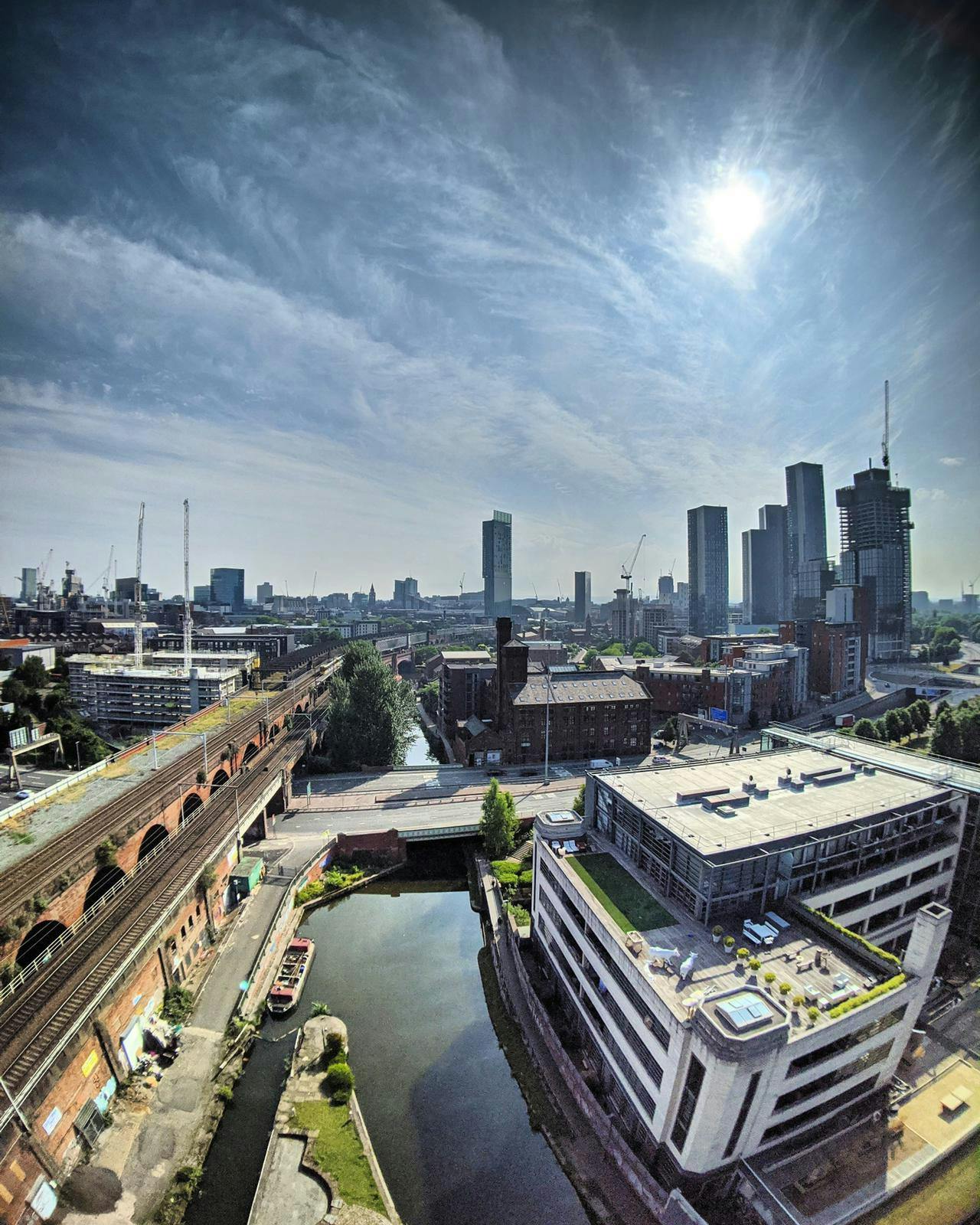
As we begin to see parts of our lives returning to a greater degree of normality, we along with everyone else are intrigued to see the implications of Covid-19 on everyone’s working lives.
In this article, we’re taking a look at the impact on office space and whether there really will be a radical change in the way that we all operate on a day-to-day day basis. We caught up with David Porter of Knight Frank and Bob Ward and Simone Masterson from EY to get their thoughts on how this might play out over the coming months.
In Knight Frank’s view, this can be broken down into three phases:
– Phase 1 (Lasting 2/3 months) – Lockdown = a prolonged period of enforced working from home.
– Phase 2 (Next 6 months) – Re-occupancy but at a time of social distancing.
– Phase 3 (Next 6-36 months) – Restructuring business and reimagining work and the workplace.
This can be summarised as Experimentation (Phase 1), Evaluation (Phase 2) and Evolution (Phase 3).
As we’ve all had to adapt to the current situation, it will be interesting to see what the impact will be on office space and whether working from home becomes the new normal.
David Porter, Partner and Manchester Office Head at Knight Frank, sees a number of reasons for the continued case for the office.
“In our view, offices are more than just a cost, rather a strategic device that can be used as a competitive advantage if used in the right way. Social interaction has been and will continue to play a very important role in people’s working lives, with offices central to this allowing collaboration and innovation to take place.”
Bob Ward North West Senior Partner for EY commented: “The lockdown period has certainly been a rather strange and surreal time. We’ve been able to operate our business well during this period with employees and clients adapting quickly to working from home, although I know there are challenges for some associated with not being able to work from the office on a regular basis.
In my role, I hold regular catch-ups with our local teams and clients and a lot of these meetings were normally face-to-face. For me, there’s no substitute to meeting people in person and establishing that personal rapport, which is a key part of leadership, but I can see that technology will help us create a more flexible and dynamic work environment in the future.”
Moving forward the question is whether less space will be needed due to the working from home (WFH) narrative, or will more space be required due to social distancing.
Knight Frank believe that this is highly variable sector to sector and company to company. There is an expectation that the pendulum will swing back on WFH but land a higher level of utilisation than pre-crisis. The potential outcome of this may be less but better office space, dispersed across and within cities, with less densely occupied space (increase sq ft). All of this is dependent on how social distancing evolves and whether it becomes a long-term reality of our day to day lives.
So where are we three years from now?
David believes that it will be vital for companies to be prepared for structural change, with the likelihood of a flight to quality, flexibility and potentially decentralisation with regards to office space. “HQ offices will become centres for collaboration, innovation, socialisation and education but at the same time work will likely become more dispersed.”
Simone Masterson, Senior Executive at EY, thinks that whilst working from home will become much more of a social norm after COVID-19, it doesn’t necessarily mean it should be the way forward.
“While as a business we have been working well remotely from home with lots of interactions with colleagues and clients through video calls, it’s not the same as being in the office and meeting people face to face.
“I like being able to separate my home and work life, which is punctuated by my daily commute, giving me the time to unwind after a day in the office. Building relationships virtually can also be difficult. Although video calls make it easier to engage with a person, being able to leave your desk to meet up for a quick chat over a coffee is much easier to do in person rather than a call, which still feels a little bit formal.
“I think flexibility is key and, over time, striking the right balance between being in the office and working from home will be crucial. If we can find that balance, productivity levels will thrive, helping employees and businesses to really succeed.”
In summary, the current environment has already caused a significant shift in the way that everyone carries out their day to day working lives and at this point, it appears likely that there will be longer term structural changes for employees and employers alike. Having spoken to David, Bob and Simone, the role of an office as a central hub for collaboration, social interaction and innovation will remain vital for businesses across Manchester – it will be interesting to see how the situation evolves over the coming months and years.
Thank you to David, Bob and Simone for their contributions to this article. If anyone has any questions on the back of this, please get in touch and we will be happy to help out.


